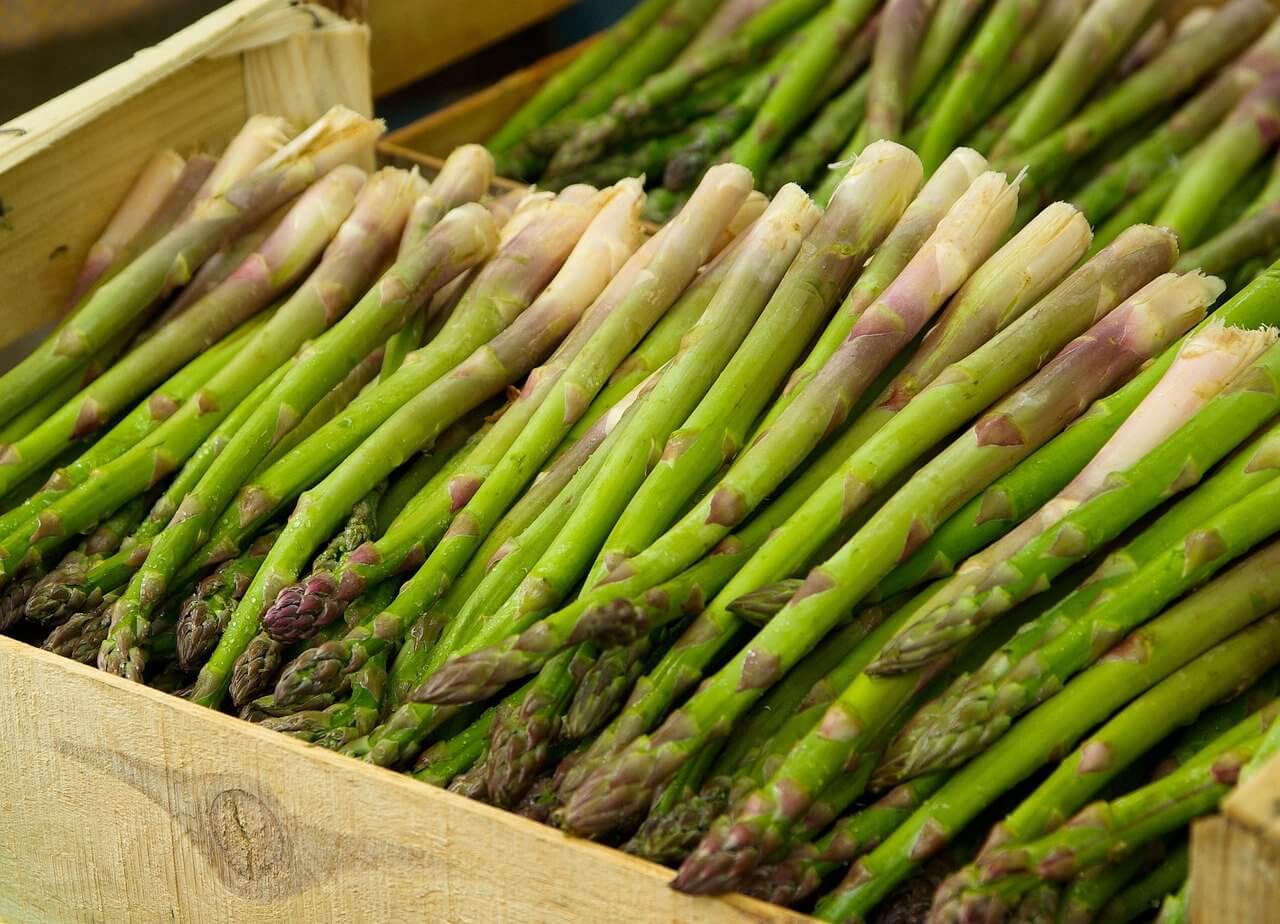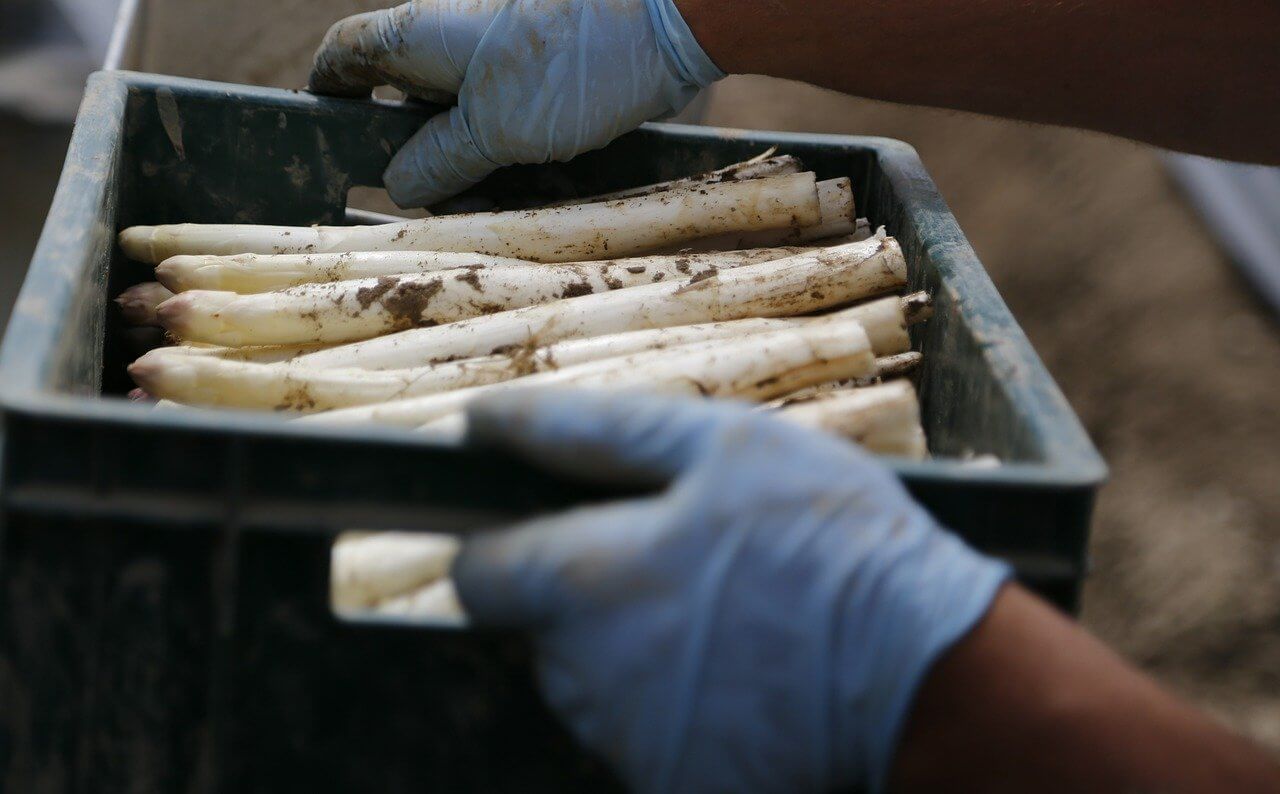It may surprise you to know, if you are new to the world of growing asparagus, that there is actually more than one type. You may have seen the white type in fancy restaurants, but what actually IS the difference between white and green asparagus?
These different looking vegetables are actually products of the same plant, they are just grown in different ways.
It’s an intriguing thing, that the end results of the same plant can look so completely different! Let’s learn about white asparagus vs green asparagus.
What You'll Learn Today
What Is The Difference Between White And Green Asparagus

As we probably all remember from plant experiments at school, plants need sunlight in order to produce Chlorophyll, the compound that gives them their characteristic green coloring.
If you grow a plant without sunlight, it will not turn green – this is why some types of asparagus are white and some green; the white types have been grown in the dark while the green types are exposed to sunlight.
White asparagus has a very mild flavor, while the green types taste a bit more hearty and a bit more “asparagus-y”. The white version is also a little tougher than its green cousin, because the stems are usually fatter and thicker.
Green asparagus, because it is more common and less difficult to grow, tends to carry a lower price tag – whether or not the white type lives up to its higher cost will be up to you to decide!
Nutritional Benefits
All asparagus contains impressive health benefits. It is tasty and low in calories, plus it packs an impressive nutritional punch, as it contains many vitamins and minerals which are very good for the body.
Green asparagus contains the most amount of fiber compared to its white friend, which makes it a healthier vegetable in general. Green types also contain vitamins B and C, along with potassium, calcium, folic acid and beta carotene.
White asparagus contains these nutrients too, but in lower doses, which means you will have to eat more of it to get the same nutritional benefits. Luckily, because asparagus is so yummy, this shouldn’t be too much of a trial!
White and green asparagus taste pretty similar, but you will notice a stronger flavor from the green variety. (Both types have the potential to make our urine output smell funny, in case you were wondering!)
Cooking

How To Cook Green Asparagus
Generally, unless you have a really big stalk, which tend to be tougher, all you need to do is trim the ends off your spears and lightly steam them until al dente. Add a little butter and a grind of fresh black pepper and you’re away!
Green asparagus can be used in a lot of dishes, but not those that are cooked for a very long time, otherwise it will lose its delicious crunch, and you may miss out on its delicate flavor too.
Depending on the thickness of your spears you can cook them in different ways – thinner ones are best for stir fries, savory tarts and pasta dishes, while thicker spears can stand up to a bit of grilling or roasting.
How To Cook White Asparagus
White asparagus is a tougher customer than its green counterpart, so it can stand up to longer cooking times. You will probably also find that it is improved by peeling off the outer layers of skin before cooking too.
White asparagus can still hold its shape and crunch even if cooked for longer periods, and it will retain its flavor too. You can use this vegetable for roasting, slow cooking, casseroles and other dishes that take longer to cook.
Growing
This video shows us a few of the techniques involved in growing and cooking white asparagus:
How To Grow White Asparagus
In order to produce the characteristic thick, white stems, you will need to slightly adjust your asparagus growing methods. White asparagus is produced using a process called Etiolation, which is preventing any sunlight reaching the plant.
Follow the same process for growing green asparagus, but you need to keep your layers of mulch and compost covering the plant, to keep as little sunlight reaching them as possible.
Once the spears have reached 6-8 inches tall, move the compost or mulch aside and cut the spears just below the surface. You can eat and store your white asparagus in just the same way as you do the green kind.
How To Grow Green Asparagus
Asparagus plants like a good, deep trench in which to live, so you will need to dig a deep hole for them, with plenty of well rotted compost in the hole where they are going to stay.
Make sure you put a good layer of compost, or rotted manure, to the bottom of the trench – asparagus likes a lot of nutrients, so it will need to be fed from both above and below.
Leave about 18” between each plant, to allow them space to grow their roots and their shoots – these plants don’t like to be crowded.
Place around 3” of soil over the top of the crowns – don’t worry; the shoots will push through this covering and they will do far better this way than if they are left uncovered.
Once you have planted your crowns, you will need to leave them for at least 2 years before you start to harvest any decent spears. If you harvest too early, you will not have good thick stems.
Final Words
As you can see, the different types of asparagus share many similarities, but they are also quite different, and can be used in entirely separate ways. Whichever type you prefer is up to you!